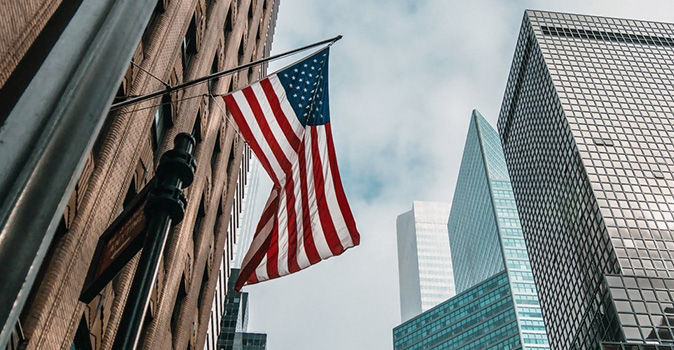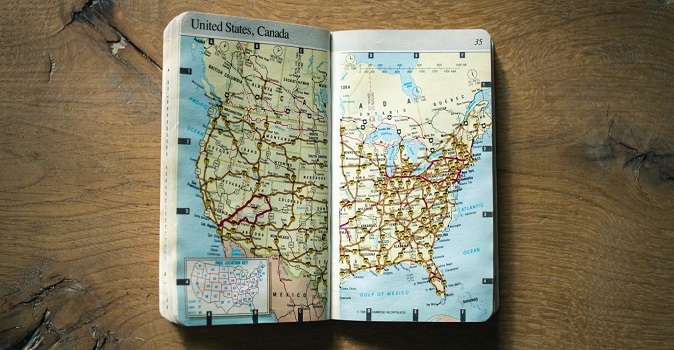International citizens are welcome and encouraged to study in the United States, but to do so generally requires a visa. There are two types of student visas: the F-1 visa, which this article will review in detail, and the M-1 visa.
There is also an exchange visitor visa, known as the J-1 visa, for individuals who are approved to participate in exchange visitor programs in the USA.
Most students traveling to the United States for a course of study require the F-1 visa. To determine which visa you need, review this chart:
| Type of Intended Study in the U.S. | Visa Required |
|---|---|
|
F-1 |
|
M-1 |
| Type of Exchange Program in the U.S. | Visa Required |
|---|---|
|
J-1 |
If you're planning to participate in an exchange program in the United States, learn more about the J-1 visa here.
When to Apply for an F-1 Visa
Before applying for an F-1 student visa, international students must first be accepted to and enrolled in a course of study that has been approved by the Student and Exchange Visitor Program (SEVP).
Once an SEVP-certified school has formally enrolled you in a course of study, you will be registered in the Student and Exchange Visitor Information System (SEVIS). You will also be required to pay the SEVIS I-901 fee. At that point, the school will issue you a Form I-20 and you may begin the visa application process.
The F-1 visa application process begins with an initial online application. You'll also be required to book and attend an appointment at a U.S. embassy or consulate in your home country. Appointment wait times vary by location, season, and visa category, and may exceed one month. You should consult the U.S. embassy or consulate where you plan to apply to see how long visa appointment wait times are.
To avoid costly expedition fees and to ensure you receive your visa on time, you should begin the application process as soon as you receive a Form I-20.
NOTE: Student visas can be issued up to 120 days before the program start date listed on the Form I-20. However, you will not be able to enter the United States on your student visa more than 30 days before that start date.
Who Qualifies for an F-1 Visa?
Before you apply for an F-1, make sure you have met all the conditions for qualification. Foreign nationals must meet these criteria to qualify for an F-1 student visa:
- You are already enrolled in an academic course of study or a language training program in the United States
- Your school is certified by SEVIS
- You have paid the SEVIS I-901 fee
- You have received a Form I-20 from your SEVP-approved school
- You are enrolled as a full-time student
- You are proficient in English or you are enrolled in courses leading to English proficiency
- You possess sufficient funds to support you throughout the entire proposed course of study
- You have a residence abroad which you have no intention of giving up
Once you can tick off all these boxes, you're ready to begin the F-1 visa application process!
How to Apply for an F-1 Visa
IMPORTANT NOTE: The order of the steps you must take to obtain an F-1 student visa is subject to vary by consulate or embassy. The application process outlined below reflects a common order of steps. You should check with your local institution before beginning the application process to determine the precise order of steps your consulate or embassy requires.
Step 1: Complete the Online Visa Application
Fill out the Online Nonimmigrant Visa Application (Form DS-160) to begin the F-1 application process. To complete the Form DS-160, you will need to upload a photo that meets certain photo requirements.
Once you've completed the online visa application, print out the confirmation page to bring to your interview at the embassy or consulate.
Step 2: Schedule an Interview
In general, F-1 visa applicants are required to complete an interview at a U.S. embassy or consulate in their home country. Those under age 14 or over age 80 may be exempt from an interview.
As mentioned above, wait times for an appointment vary. Check with your local embassy or consulate for location-specific information and schedule an appointment as soon as possible.
Step 3: Prepare for Your Interview
Some embassies and consulates require applicants to pay the non-refundable visa application fee of $160. If you are required to pay before your interview, you will need to bring the receipt of payment to your appointment.
If you're not required to pay before your interview, you will be expected to pay at your appointment. Be sure to bring an appropriate form of payment in the correct amount.
Step 4: Gather Required Documents for Your Interview
Required documents include:
- Your passport (valid for 6 months beyond your proposed stay in the U.S., unless exempt)
- The online nonimmigrant visa application (Form DS-160) confirmation page
- Application fee payment receipt
- Photo that meets photo requirements (in case the online photo upload failed)
- Certificate of Eligibility for Nonimmigrant Student Status — for Academic and Language Students (Form I-20 issued by your school)
- Details of your academic preparation — e.g. transcripts, diplomas, degrees, certificates, or standardized test scores required by your U.S. school
- Documents proving your intent to depart the U.S. upon completion of studies
- Proof of sufficient finances to cover all educational, living, and travel costs*
*Though not required for the visa application, international student health insurance can help prove your ability to pay for your trip expenses by showing that you have coverage for unexpected medical expenses that might occur during your stay in the U.S.
Our StudentSecure insurance plan is available in four levels of coverage so you can choose the plan that best meets your needs and budget. Upon purchase, you'll have access to a visa letter that specifies your medical benefit amounts and your insurance coverage period.
Step 5: Attend Your Interview
At your interview, a consular officer will determine your eligibility for a student visa based on your submission of the necessary documents and forms. You will be asked to provide an ink-free, digital fingerprint.
Your application may also require additional administrative processing, which will be determined by your consular officer.
After receiving approval, you may be required to pay a visa issuance fee and make arrangements for the return of your passport along with the visa.
How to Maintain F-1 Visa Status
Once issued an F-1 visa, you must follow certain regulations determined by the U.S. Department of State to maintain your visa status. Below are the conditions you must meet to maintain F-1 visa status.
When arriving in the United States:
- You must enter the U.S. no more than 30 days before your program of study begins.
- You must immediately contact your designated school official (DSO) when you enter the U.S.
- When you arrive at school, you must contact your DSO again (no later than the program start date listed on your Form I-20).
When studying in the United States:
- You must attend and pass all your classes. If the program is too difficult, consult your DSO immediately.
- If you think you won't be able to complete your program of study by the listed end date, talk to your DSO about the possibility of requesting a program extension.
- You must take on a full course load each term. If you cannot take on a full course load, speak with your DSO.
- You must not drop a class without speaking to your DSO first.
As you can see, your DSO is an important point of contact during your course of study in the U.S. In addition to the circumstances listed above, you should contact your DSO if:
- You plan to change your major, program, or degree level
- You plan to change your education level
- You plan to transfer to a new school or take a leave of absence
- You plan to take a break from school
- You plan to travel outside of the United States
- You plan to move to a new address
NOTE: F-1 students that complete one full academic year at an SEVP-certified school are entitled to annual vacation, as long as they register for classes for the term following vacation. Learn more about vacation policies for SEVP schools.
Employment With an F-1 Visa
In general, F-1 students are not allowed to work off-campus during the first academic year. However, they may accept on-campus employment under certain conditions and restrictions.
After the first year, F-1 students may engage in three types of off-campus employment:
- Curricular Practical Training (CPT)
- Optional Practical Training (OPT) (pre or post-completion)
- Science, Technology, Engineering, and Mathematics (STEM) Optional Practical Training Extension (OPT)
NOTE: If you can prove "a qualifying economic hardship," you may also be eligible to work off-campus.
Any off-campus employment must be related to your area of study and must be authorized by the DSO and U.S. Citizenship and Immigration Services (USCIS). If you choose to work without authorization, you will be expelled from the country immediately and may not be able to re-enter the U.S. at a later date.
Interested in working while you're in the U.S.? Here are 4 ways you can work on a student visa!
Extending Your F-1 Visa
Finally, unless you apply to extend your visa, foreign students are expected to depart the U.S. within 60 days after the program end date listed on the Form I-20.
You may apply for an extension if:
- You were lawfully admitted to the U.S. with a nonimmigrant visa
- Your nonimmigrant visa status remains valid
- You have not committed any crimes that make you ineligible for a visa
- You have not violated the terms of your admission
- Your passport is valid and will remain valid for the duration of your stay
To extend your F-1 visa, you must request an extension (Form I-539) through USCIS at least 45 days before your authorized stay expires.





